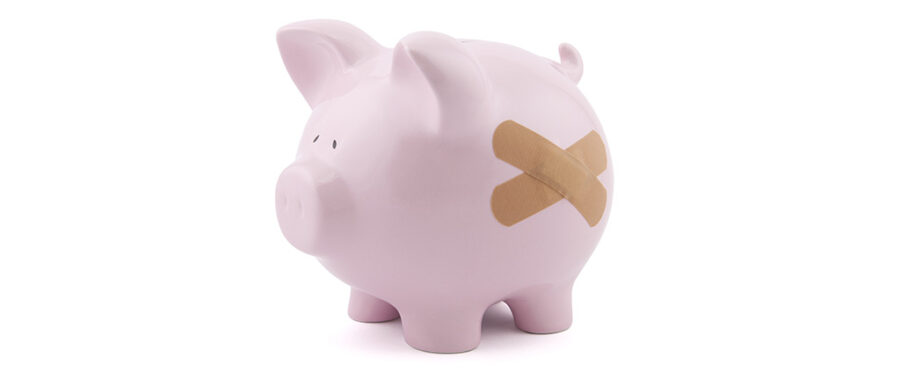Banks are at the frontline of the relief measures announced by the Federal Reserve and the Trump administration to support the economy in the downturn triggered by the coronavirus pandemic. The Fed has noted that the U.S. banking system is stronger than it was during the 2008 recession with supporting oversight by regulators. However, in its desire to make it easier for banks to expand lending during the slowdown, the Fed has relaxed its regulatory requirements on several fronts.
The reality is banks are vulnerable and could get seriously hurt if sections of borrowers default on their loans, warned David Zaring, Wharton professor of legal studies and business ethics. He shared his views on the emerging landscape for banks on the Wharton Business Daily radio show on SiriusXM. (Listen to the complete podcast above.)
“[Banks are] clearly the vehicle that the Fed and Congress have chosen to use to try to get as much cash as possible for the rest of the economy,” said Zaring, who is also author of the book The Globalized Governance of Finance. “[Banks] look reasonably ready for a shock, but I don’t know how long any business could survive an economic shock of this magnitude. I don’t think banks are so different from other businesses in that regard.”
Not surprisingly, some skepticism surrounds the role of banks in responding to the coronavirus pandemic. A Financial Times report pointed out that “banks stand to collect billions of dollars in fees” on the $350 billion loans that are being offered to U.S. small businesses. It noted that banks will receive processing fees, paid by the federal government, for making the loans. Those fees will vary from 1% to 5%, decreasing progressively as the loan sizes get bigger.
In any event, “the response to this crisis has been one that has put banks at the front and center,” said Zaring. The Fed has encouraged banks to work with borrowers. “They’ve given [the banks] all the resources they need to get dollars in the hands of people who really want dollars right now,” he said. He listed other Fed initiatives such as the central bank facilitating the flow of dollars through banks to borrowers globally with swap lines and repo facilities. (The latter allows central banks elsewhere in the world to temporarily exchange their U.S. Treasury securities held with the Federal Reserve for U.S. dollars.) “All that is designed to make the Fed the bankers’ bank, and the banks the conduit for getting money out into the real economy,” he added.
No Room for Complacency
It helps that U.S. banks are seen as being healthy enough to take on the task of channeling the loans to businesses. But there are no guarantees that U.S. banks will continue to be strong throughout the crisis. “They’ll tell you that the [banks are] really well capitalized,” Zaring said. “But it can’t go on forever. If all your borrowers can’t pay back their loans, then any financial institution is going to run into trouble, no matter how many dollars the Fed makes cheaply available to those institutions.”
“There’s always some risk,” Yair Listokin, a law professor at Yale University whose research specialties include central banking law, told Wharton Business Daily recently. “A bank or [any] other financial institution is inherently unstable.”
“I don’t know how long any business could survive an economic shock of this magnitude. I don’t think banks are so different from other businesses in that regard.” –David Zaring
Zaring pointed out that there are already some unsettling developments relating to banks. “I don’t know if I’d call this cause for concern, but actions by government regulators suggest that they’re worried about the capital levels at banks,” he said. “The Fed just relaxed its supplementary leverage ratio, which means that big banks will have to hold fewer ultra–safe government assets. That’s going to make it easier for them to meet their capital requirements (equity capital as a measure of a bank’s risk-weighted credit exposure).”
The Federal Reserve contends that the change to the supplementary leverage ratio “will mitigate the effects of those restrictions and better enable firms (financial institutions) to support the economy.” The Fed has also allowed smaller banks to lower their capital requirements from 9% to 8%. “That suggests that regulators are concerned that 9% is too high, or it might be too high soon,” Zaring noted.
Some quarters have frowned on the Fed’s relaxation of its regulations for banks, Zaring said, because such relaxations “sometimes leave regulators to extend and pretend and prop up insolvent financial institutions.”
Impact of Defaults by Borrowers
That problem will get compounded as the Fed begins implementing the $2.2 trillion CARES Act relief package that has allocations for loans to businesses, Zaring cautioned. “They’re going to make some loans through this facility that are going to go bad or are going to prop up some somewhat seedy businesses,” he said. “And if that’s what happens, I think Congress will be unhappy, but that’s something that the Fed apparently has signed up for and is willing to try to take on.”
In the short-term, businesses such as airlines, hotels, bars and restaurants would be among the first to face the brunt of the impact from the coronavirus pandemic. Egged on by regulators, banks are continuing to lend to those businesses and conserving their capital by avoiding stock buybacks to bolster their balance sheets, said Zaring.
“If all of your borrowers can’t pay back their loans, then any financial institution is going to run into trouble, no matter how many dollars the Fed makes cheaply available to those institutions.” –David Zaring
Zaring was more worried about the long–term consequences of the pandemic. “As the economy continues to contract, lenders are going to have a big problem,” he said. In particular, banks located in Texas and North Dakota, and others dependent on the oil and gas industry “are the ones most likely to run into trouble first,” he said. The oil price war between Saudi Arabia and Russia could trigger “a wave of bankruptcies” in the energy industry, which in turn would hurt their lenders, he added.
Stress Tests to Check Resilience
Early warning alerts are available from stress tests that reveal the capital strength banks have to weather turbulence in their markets. Stress tests ascertain the resilience of banks to financial and economic shocks, and serve as call-outs to boost capital as may be necessary.
But the European Banking Authority has suspended stress testing of banks across the European Union, contending that banks now need to focus on the core operations of meeting customer needs. The Bank of England, too, has exempted big lending institutions from this year’s stress tests.
In contrast, U.S. banks will continue to be subject to stress tests, Zaring pointed out. The Fed has granted small banks affected by the pandemic more time for regulatory reporting, but has offered no such respite for big banks, according to a Wall Street Journal report. “Indeed, [the Fed] has indicated that it will continue to go through with the [stress test] exercise so that it can recalibrate just how much capital banks have to hold onto in the case of this emergency,” he said.



